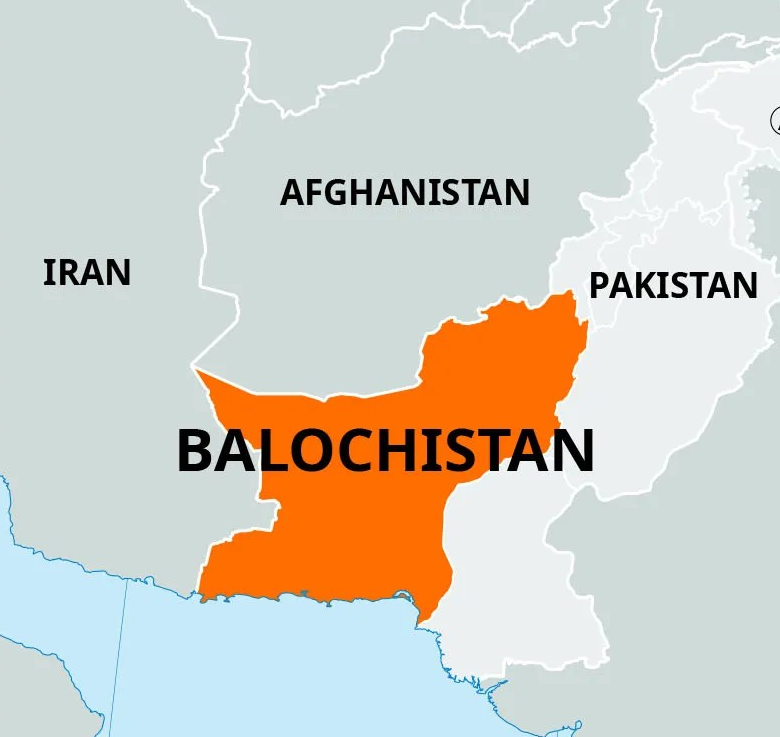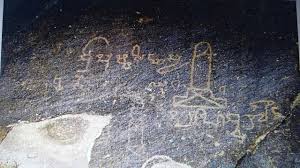Antimony Discovery in Balochistan, Pakistan

- 07 Apr 2025
In News:
In a recent geopolitical development, Pakistan has reportedly discovered a significant deposit of Antimony in the Balochistan region — an area marred by conflict and instability. This finding holds both economic and strategic significance, given the growing global demand for rare and critical minerals.
About Antimony
- Chemical Element: Antimony (Symbol: Sb, Atomic Number: 51) is a metalloid, meaning it exhibits properties of both metals and non-metals.
- Physical Properties:
- Solid at room temperature.
- Poor conductor of heat and electricity.
- Found in commercial forms such as ingots, broken pieces, granules, and cast cakes.
Geological Occurrence
- Primary Ore: The chief ore of Antimony is Stibnite (Sb?S?).
- Mode of Occurrence: Found in volcanic-associated deposits and deep-seated veins, formed under moderate to high temperature and pressure.
- Also commonly obtained as a byproduct from lead-zinc-silver mining operations.
Global Production Landscape
- China is the dominant global producer, accounting for over 88% of world production.
- Other notable producers include Russia, Bolivia, and Tajikistan.
- India currently does not have significant reserves or production of Antimony, making it dependent on imports for industrial use.
Key Industrial and Strategic Uses
- Electronics Industry:Used in manufacturing semiconductors, infrared detectors, and diodes.
- Alloys:
- Alloyed with lead and other metals to increase hardness and strength.
- Lead-antimony alloys are extensively used in lead-acid batteries.
- Defense and Printing:Utilized in the production of bullets, type metal for printing, and cable sheathing.
- Flame-Retardants and Ceramics:Antimony compounds are key ingredients in flame-retardant materials, as well as in paints, enamels, glass, and pottery.
ASI Decodes Sanskrit Inscription Found in Pakistan-Occupied Kashmir (PoK)

- 29 Dec 2024
In News:
An ancient Sanskrit inscription found in Gilgit (PoK) was decoded by the Archaeological Survey of India (ASI).
About the Inscription:
- Location:
- Gilgit (PoK): Written in Brahmi script, dating back to 4th century CE.
- Peshawar (Pakistan): Written in Sharada script, dating to 10th century CE.
- Details of Gilgit Inscription:
- Mentions Pushpasingha, who installed a Mahesvaralinga for the merit of his guru.
- Written in Brahmi script, which was prevalent during the 4th century CE.
- Religious Context: Indicates significant religious connection, particularly with Shaivism.
- Details of Peshawar Inscription:
- Fragmentary: Engraved on a slab.
- Written in Sharada characters (10th century CE).
- Mentions Buddhist Dharini (chants), particularly referring to Da (Dha) rini in line six.
- The inscription is partially damaged, and further details are unclear.
- Earlier Discoveries:
- This is not the first Sanskrit inscription decoded from Pakistan. In the past, Sanskrit inscriptions have been found in various parts of Pakistan.
- Swat Valley: Known for numerous Buddhist rock inscriptions in Sanskrit using Nagari script, which were part of the Gupta Empire (circa 240–550 CE).
- Religious and Cultural Implications:
- The Gilgit inscription provides evidence of Shaivism as a prominent religious practice in the region during the 4th century CE.
- The Peshawar inscription suggests Buddhist influences, particularly related to Buddhist chants and rituals.
- Swat Valley's Role: The inscriptions found here highlight its importance as a center of Buddhist learning and cultural exchange.
